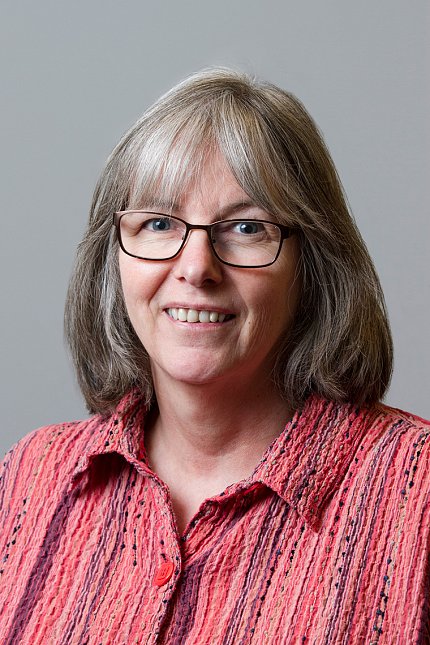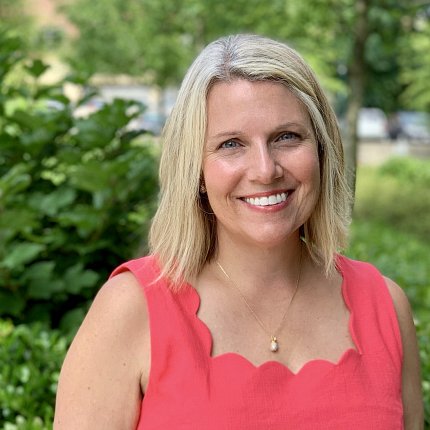'Growing the Pie'
National Academies Committee Plans for Expanding Women's Health Research at NIH
The Committee on the Assessment of NIH Research on Women’s Health has taken on the task of identifying areas of greatest potential for women’s health research at NIH. Part of the National Academies of Science, Engineering and Medicine, the committee aims to identify gaps in research across all NIH institutes and centers (ICs) that, if filled, would help improve understanding of women’s health. The organization is a frequent advisor to NIH, providing independent and objective advice on a variety of topics.

The assessment committee has met frequently since the end of November 2023, and expects to issue its final report late this year. The group hosted a series of meetings to seek input from researchers, health care practitioners, NIH representatives, the public and other interested parties.
NIH representatives from the National Institute of General Medical Sciences (NIGMS), National Institute on Minority Health and Health Disparities, Sex and Gender Minority Research Office (SGMRO), Center for Scientific Review and Office of Extramural Research (OER) attended the January meeting.
“It’s difficult to choose even a handful of areas because women’s health research as a whole is underfunded and underprioritized,” said Lindsey Miltenberger, chief advocacy officer of the Society for Women’s Health Research (SWHR), at a recent meeting of the committee. She cited data from an analysis conducted by Dr. Arthur Mirin in the Journal of Women’s Health:
In nearly three-quarters of cases where a disease mostly affects one gender, funding patterns favor males; either the disease affects women more but is underfunded in respect to disease burden, or the disorder affects men more but is overfunded in respect to disease burden.
The disparity between actual funding and that which is commensurate with burden is almost twice as large for diseases that favor males versus females.

The disparities have major consequences for how women are diagnosed and treated for many conditions, Mirin stated. His study found that some of the most under-funded diseases are female-dominated—chronic fatigue syndrome, migraine, headaches, anorexia and endometriosis—equating to fewer researchers having the ability to acquire the funding to study these conditions.
Common solutions raised at public meetings held by the committee include finding ways to bolster early-career women researchers, who may be more likely to study female-specific conditions. Panel members also discussed ways to make clinical trials more accessible to women and increase the inclusion of female animals and cells in basic and preclinical research.
Many presenters also mentioned the need to meet people and communities where they are to facilitate better understanding of their needs.
NIGMS, through its Institutional Development Award (IDeA) program, has joined forces with the Office of Women’s Health Research (ORWH) and other NIH components to fund administrative supplements on research related to women’s health. The Building Interdisciplinary Research Careers in Women’s Health program, for example, has supported more than 750 women’s health researchers, the majority of whom are women who have competed successfully for research funding after the program.
“The enthusiasm for these supplements led to another partnership with the ORWH to promote new IDeA Centers of Biomedical Research Excellence (COBREs) that emphasize women’s health,” explained Dr. Michele McGuirl, acting director of NIGMS’s Division for Research Capacity Building. “These Centers aim to build a critical mass of investigators who can compete effectively for independent research funding in the COBRE’s scientific area. We’re delighted that two COBREs in women’s health have been awarded this year.”
Another area of concern for committee representatives is health outcomes for minoritized women, who often face unique challenges in receiving proper care.

“The dearth of research focusing on sexual and gender minority (SGM) women, the lack of adequate data collection and less access to resources are a few of the unique barriers and inequities that SGM women face,” explained SGMRO Director Dr. Karen Parker. “Fostering inclusion in the workforce, increasing diverse representation of women in research, expanding data collection and increasing precision in language concerning sex and gender are just some of the many ways that SGMRO works to advance women’s health research.”
NIH’s Sex as a Biological Variable (SABV) policy is also a frequent topic at committee meetings.
Established in 2016, the SABV policy set the expectation that researchers would account for the possible role biological sex could play in vertebrate animal and human studies. Meeting participants asked whether the policy goes far enough and how it can be enforced.

In addition to defining these considerations, the committee plans to assess the appropriate amount of funding needed to address the gaps in women’s health research at NIH. In the January meeting, OER’s Division of Scientific Categorization and Analysis provided context on the intricacies of the NIH budget and how research funding is allocated.
The general sentiment from expert presentations at public meetings held by the committee thus far seems to be that more funding overall is needed, rather than dividing current funds differently.
All understudied conditions are equally deserving of a “slice of the pie” when it comes to funding, reasoned Heather Guidone, program director at the Center for Endometriosis Care and a speaker in a stakeholder perspective session at a committee meeting early this year. She shared the words of Dr. Shyam Bishen of the World Economic Forum: “The solution is not to divide more slices of one pie—it is to make more pie.”
To learn more about the committee, visit https://bit.ly/3xERekD.
